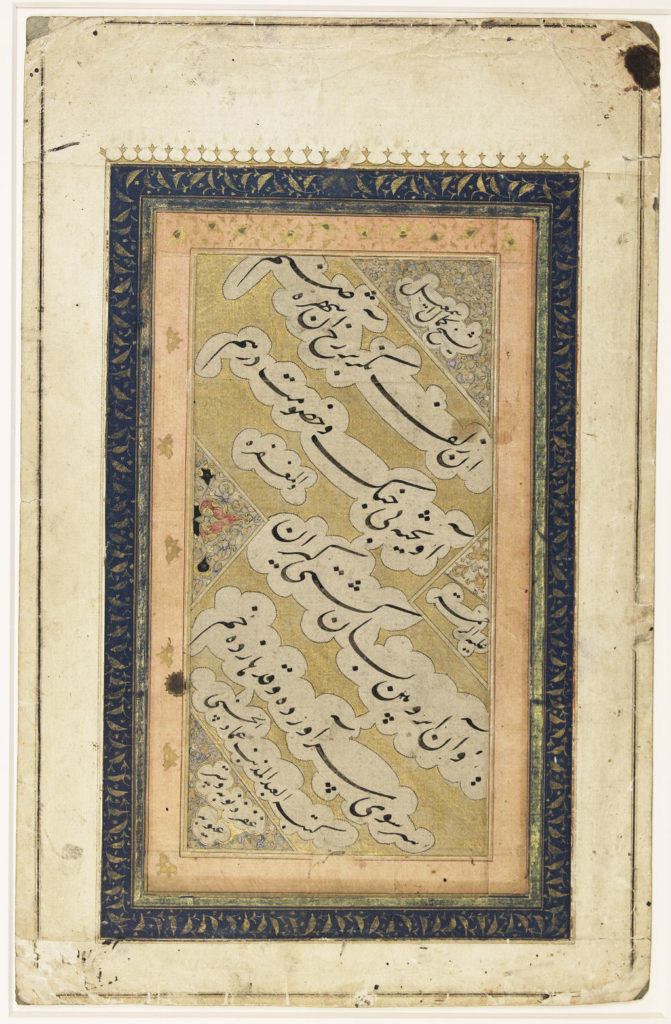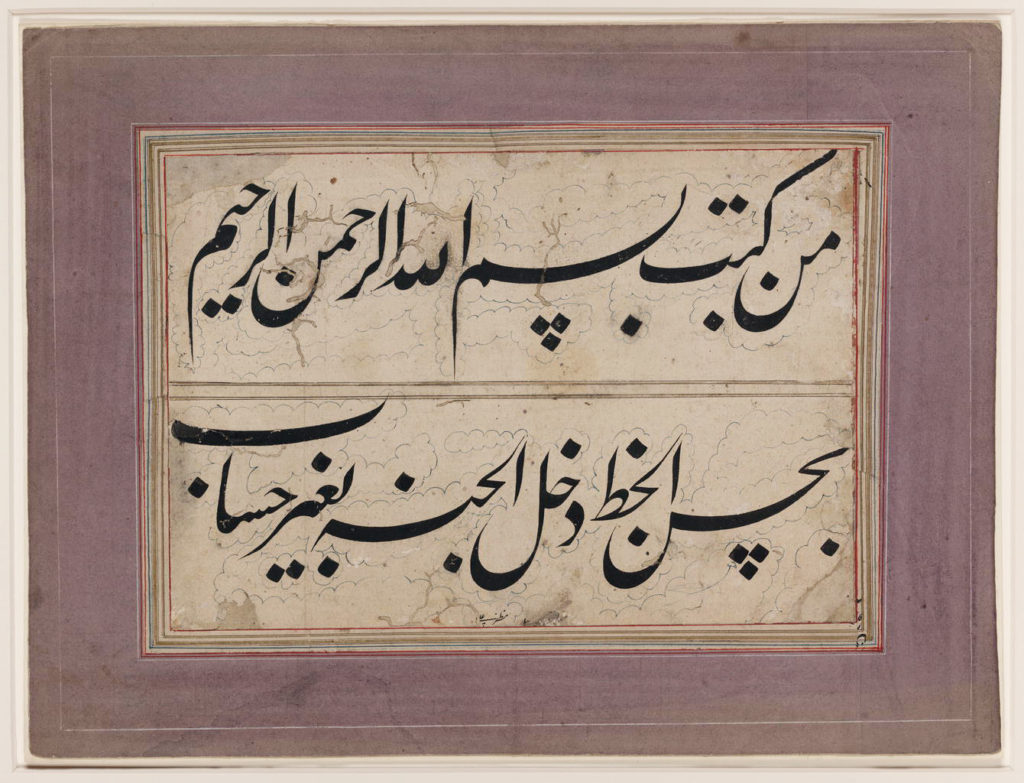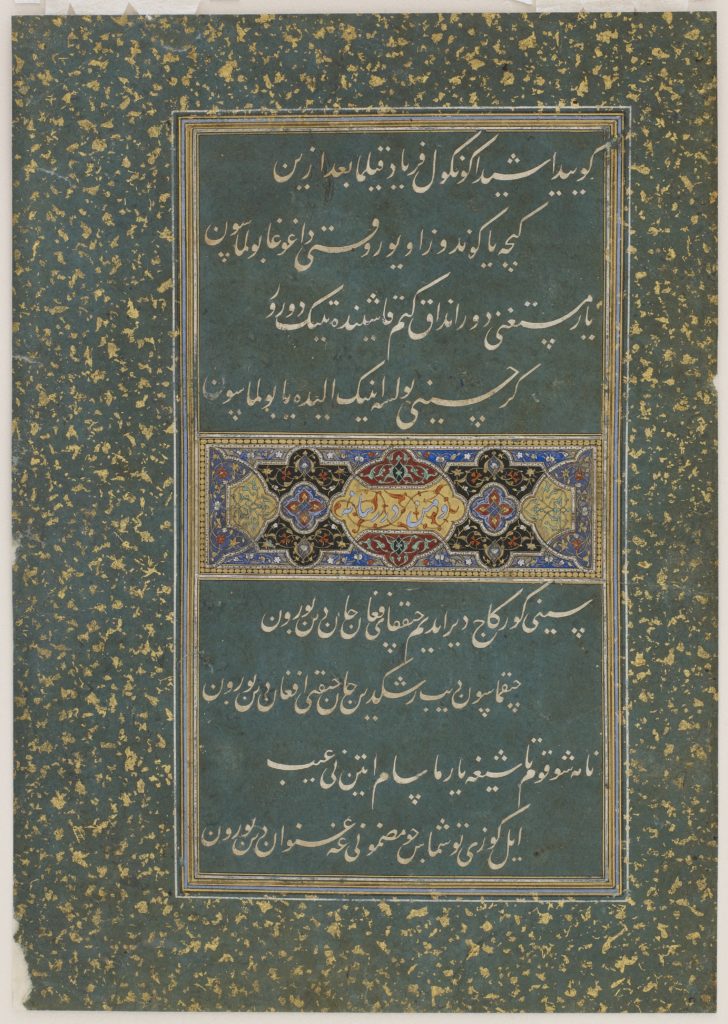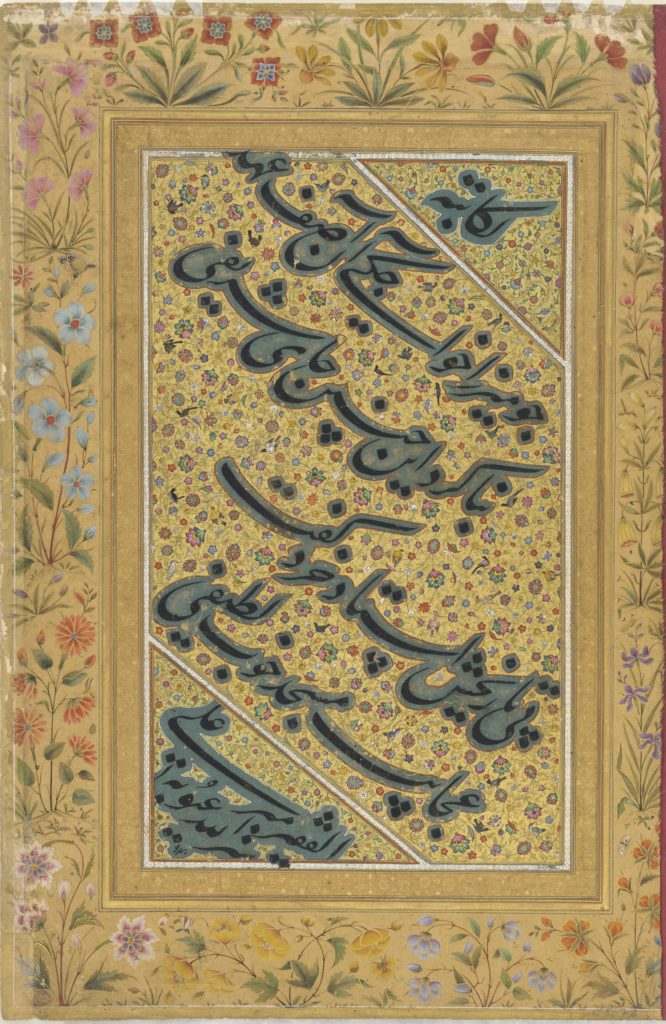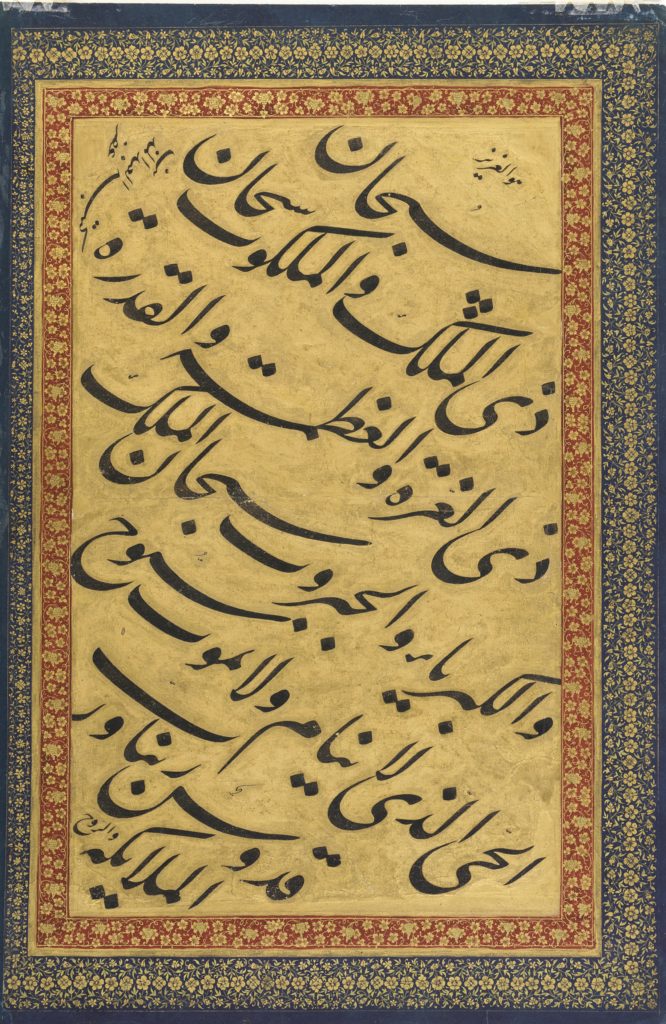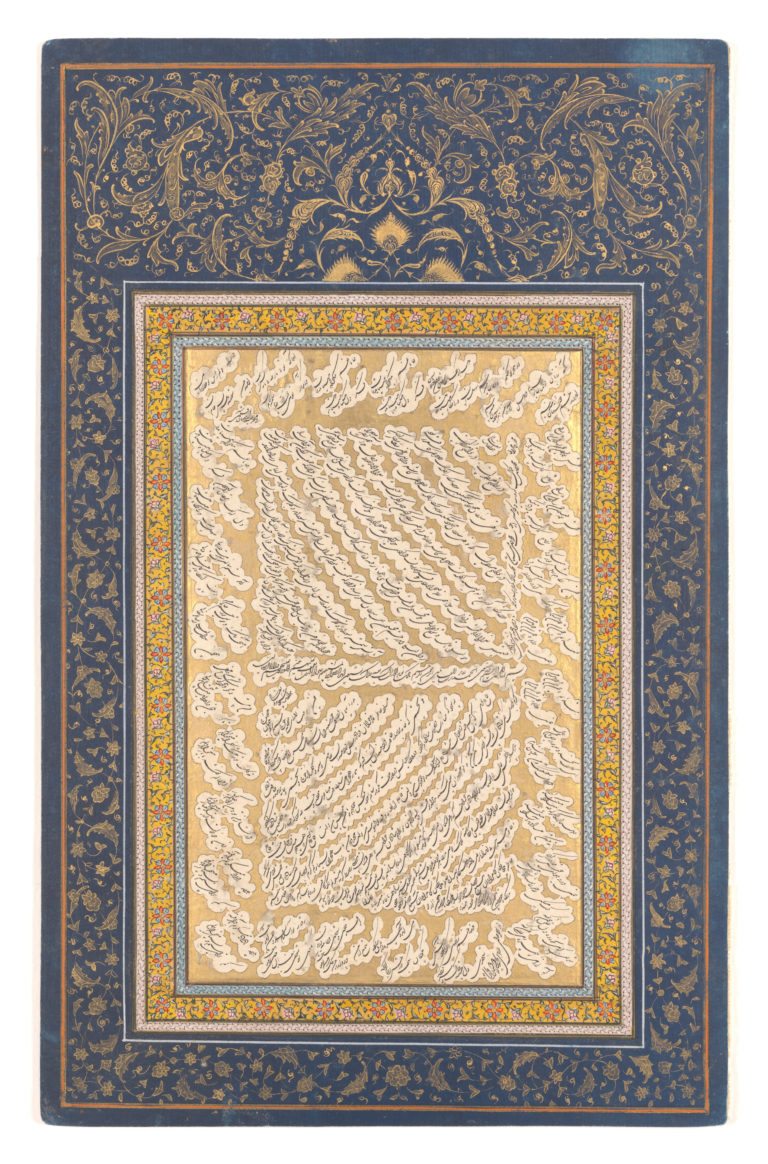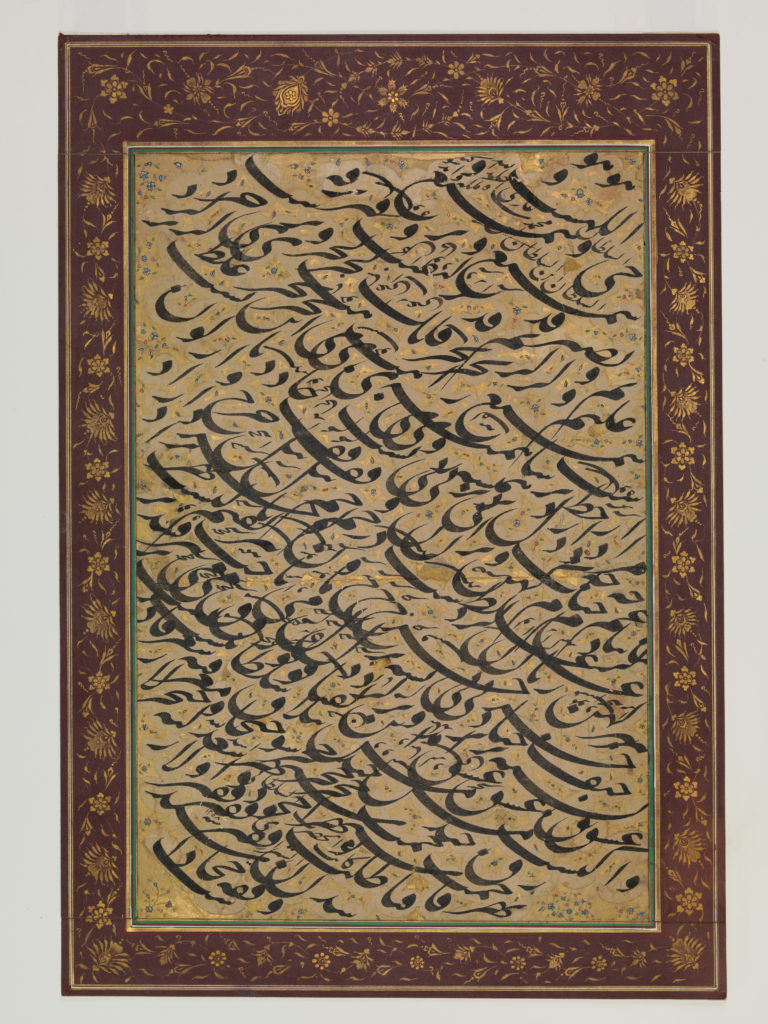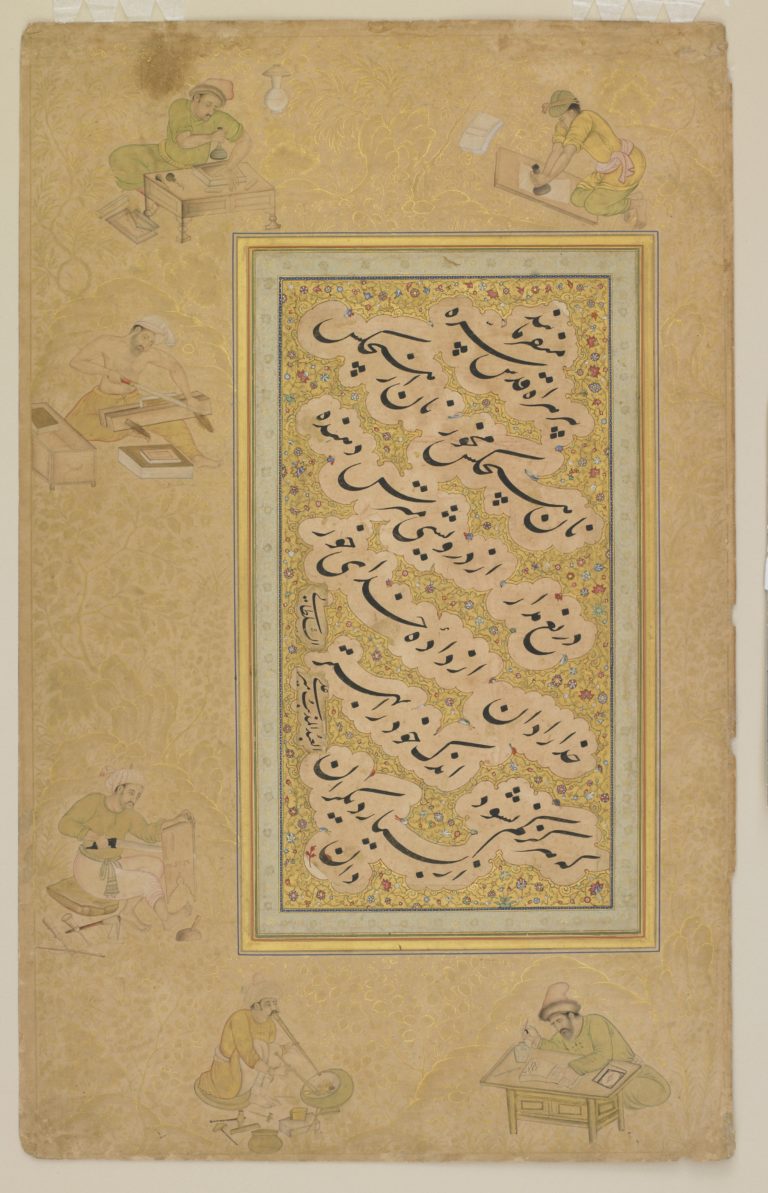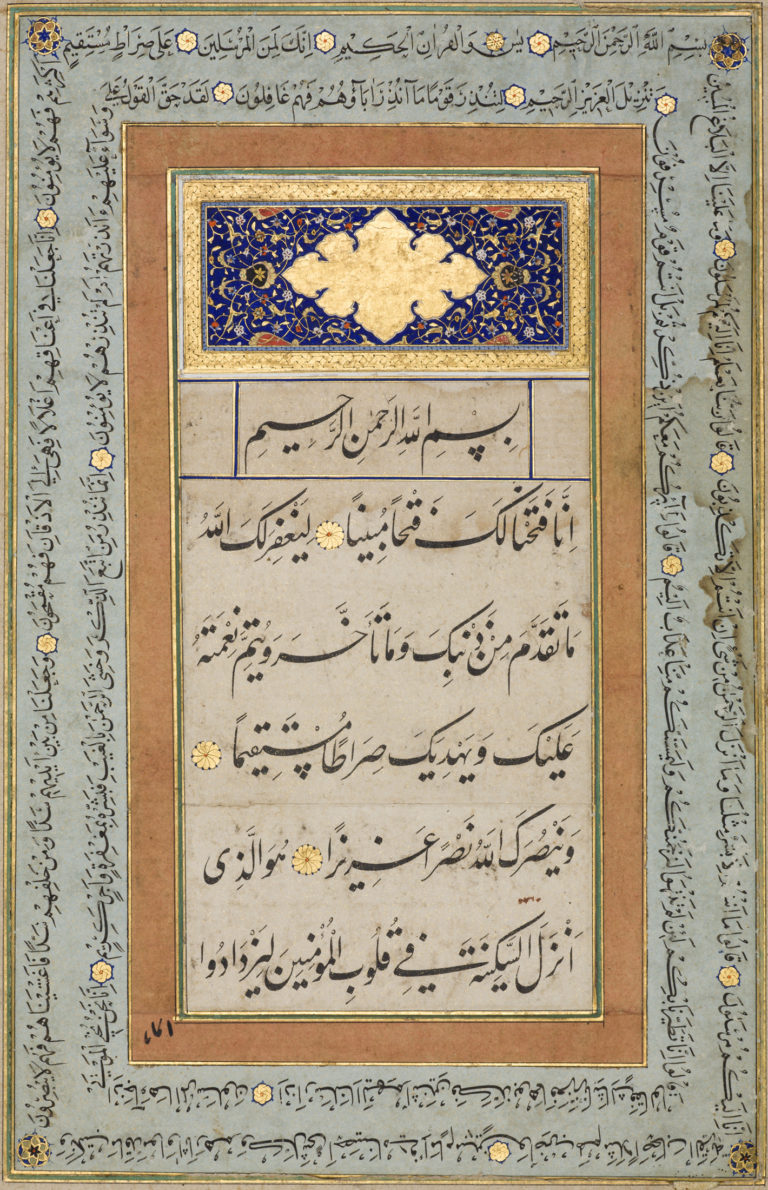Nasta‘liq
(Pronounced “nes-tah-leek”; called “talik” in Turkey, called “farsi” in the Arab world)
Meaning
- “Nasta‘liq” is thought to be a hybrid of the words “naskh” and “ta‘liq”
Uses
- Nasta‘liq was originally devised to write the Persian language
- Used in Persia and India/Pakistan for literary and non-Qur’anic works
- Used for writing Persian poetry
- Used for albums of calligraphic specimens, called qit‘a
Timeline
- Developed in 15th century Iran and perfected in the 16th century in Baghdad and Tabriz
- Still in use today
Distinctive characteristics
- Features characteristics of both naskh and ta‘liq
- Vertical strokes are short, horizontal strokes are broad and sweeping
- Letter shapes appear to be deep and hook-like
- Letter shapes vary widely in thickness
- Overall impression of swiftness, calm, fluidity
- Letters appear to “float” or “hang” across the page. This quality is increased when the text is arranged diagonally, as is common in nasta‘liq poetry
- Nasta‘liq is never written with vowels except an occasional hamza and shadda
Notes
- Very difficult to execute
- Possibly created by Mir ‘Ali Tabrizi as a result of a dream about flying ducks
